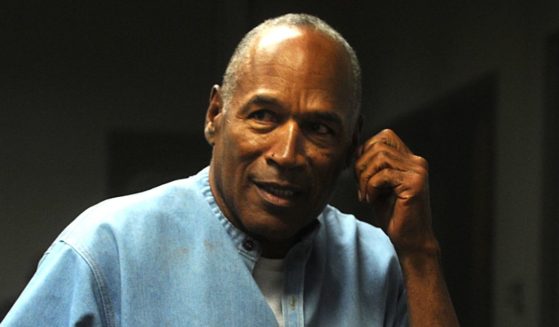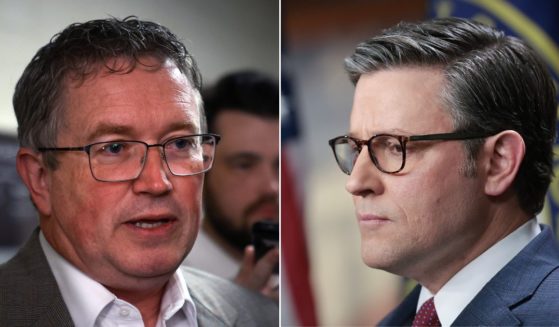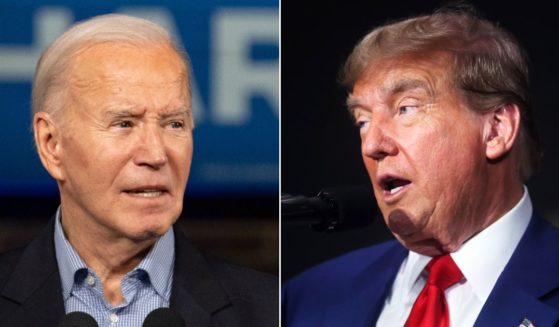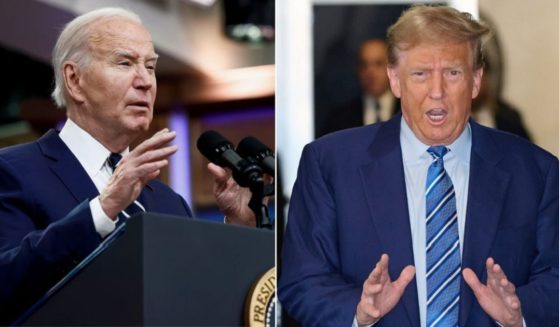Reporter Posts Video of Trying to Charge His Tesla, Shows Why Electric Cars Won't Quickly Solve Gas Issue
Editor’s Note: Our readers responded strongly to this story when it originally ran; we’re reposting it here in case you missed it.
Let’s stop paying high gas prices and save the planet and be like the cool kids and drive electric cars!
That’s what we keep hearing, right?
Who needs the laws of physics, economics, infrastructure or plain old common sense? Just electrify! Electrify! Electrify!
No need to worry about those rolling electrical blackouts in California. Or how close the Texas electrical grid came to collapsing in bad weather. Or federal mismanagement increasing natural gas prices.
After all, if men can be women and Sen. Elizabeth Warren can be a Cherokee, anything is possible. Anything!
Except replacing the internal combustion engine for transportation. At least in the near future.
Yet Biden administration officials seem to think all they have to do is snap their fingers and — presto-chango! — we’ll all be driving electric cars and the problem of gas prices will be solved.
And to help us make this quick switch, they admit they’re counting on today’s higher gas prices to prompt us to park or scrap our cars next week, dish out at least the price of a 2022 Acura MDX SUV ($46,900 — about the same as the cheapest Tesla) and whisk off in our electric ride.
Except for one thing: Electric Car Universe is not ready for prime time.
Witness what Business Insider reporter Ben Bergman tweeted while in a long line of electric cars waiting to be charged: “The very rare time as a Tesla owner I wish I could pay $6/gallon for gas and be on my way. We need more super chargers.”
The very rare time as a Tesla owner I wish I could pay $6/gallon for gas and be on my way. We need more super chargers @elonmusk pic.twitter.com/qmxbghkycO
— Ben Bergman (@thebenbergman) March 20, 2022
One response to his tweet featured a video of a stranded roadside Tesla being rescued by — of all things — a man with a gas can!
He provided gasoline to fuel a small portable Honda generator the stranded driver had in his trunk to jumpstart the Tesla.
Note the bemused good Samaritan as his gas can is used to fuel the Honda generator: “You could’ve gotten a Honda and saved all this and you’d be done!”
Just an average day with your $TSLAQ gas guzzler… pic.twitter.com/AdtUwlIWed
— Kuppy (@hkuppy) June 10, 2021
The dream of the greenies and the Biden administration is just that: a dream. It might come true in the distant future, but until then, most of us will stick with our gas-powered vehicles.
Besides a lack of charging facilities and supporting infrastructure, electric cars have their own maintenance issues related to battery costs. And then there are the environmental issues related to increased power generation and materials needed for those batteries.
There is a reason we are able to cruise in our cars all over the countryside, sometimes as far as 500 miles at a time: the internal combustion engine.
Electric cars are nothing new. In the infancy of automobiles in the late 19th and early 20th century, they were one of three modes of propulsion applied to the new horseless carriages: electric, steam and gasoline.
Although battery technology has improved since that time, early electric cars had the same problem as those of today: range. They were considered ideal for little old ladies to hum gently around the neighborhood. And steam-powered cars took too long to raise steam pressure for immediate use.
But gasoline cars started immediately and had greater range. (Weight problems meant diesel technology for roadway use wouldn’t be ready for several decades.)
As a result, for 100 years the automobile and its developing infrastructure of highways and fueling systems gave individuals and businesses increasing freedom of movement for expanded commercial and social opportunities.
And the internal combustion engine learned to fly, first in piston planes, then in jets.
But now we’re told to stop immediately, throw it all away.
Get rid of an established, workable technology and limit ownership of cars to the elites who can afford them. The rest of us can walk, ride bikes and take urban mass transit.
And electric airplanes? Forget it. Weight is the big enemy, batteries are heavy, and fossil fuel burn helps the plane get lighter and more efficient the farther it travels.
What about those in rural areas and small towns without transit systems?
Too bad. Move. And while you’re at it, learn to code.
There may be a practical use for electric auto technology in concentrated urban areas. Much like high-speed floor-to-floor building elevators, they might have their place. Assuming the power grid is upgraded.
And someday maybe underground electrical wires in concrete can be reached by some kind of probe coming out of the bottom of a vehicle much like those toy slot cars kids have played with for years. Hey, I can dream stuff up, too, right?
But for now, none of this makes sense. Governments are outlawing internal combustion cars and automakers are launching electric vehicle models to the point that Chrysler says it will be all-electric by 2028.
The auto companies are not stupid. They more than anyone have the engineering knowledge to understand the impracticality of almost immediately scrapping gasoline and diesel engines.
Can it be they’re in collusion with governments and tech companies to make the average family car inaccessible?
Nah, that’s just a crazy conspiracy theory.
But you might want to brace yourself for the transportation turnaround that’s just down the road.
Maybe the earliest critics of the internal combustion engine have an answer for us today in what they jeered to motorists then: “Get a horse!”
Truth and Accuracy
We are committed to truth and accuracy in all of our journalism. Read our editorial standards.












